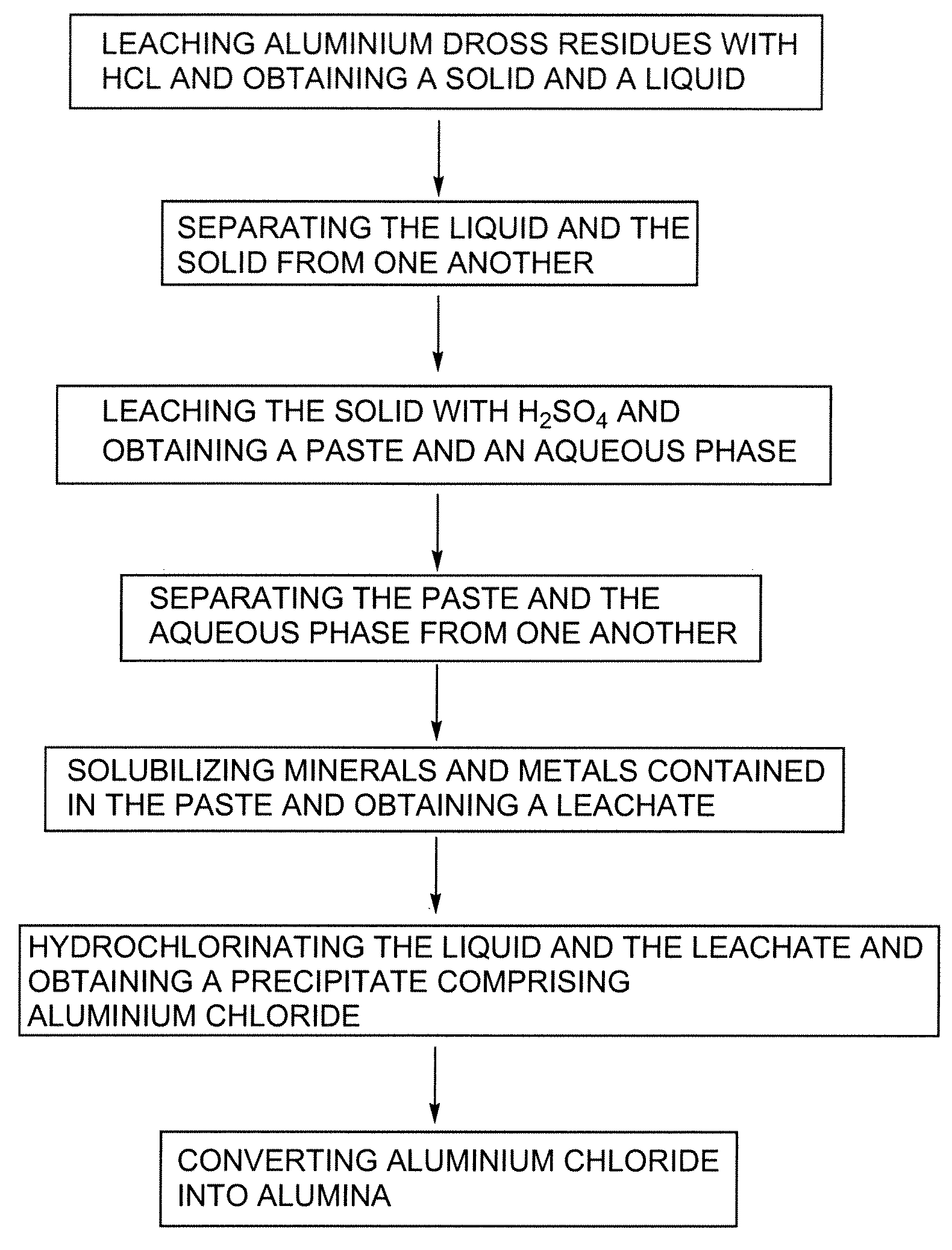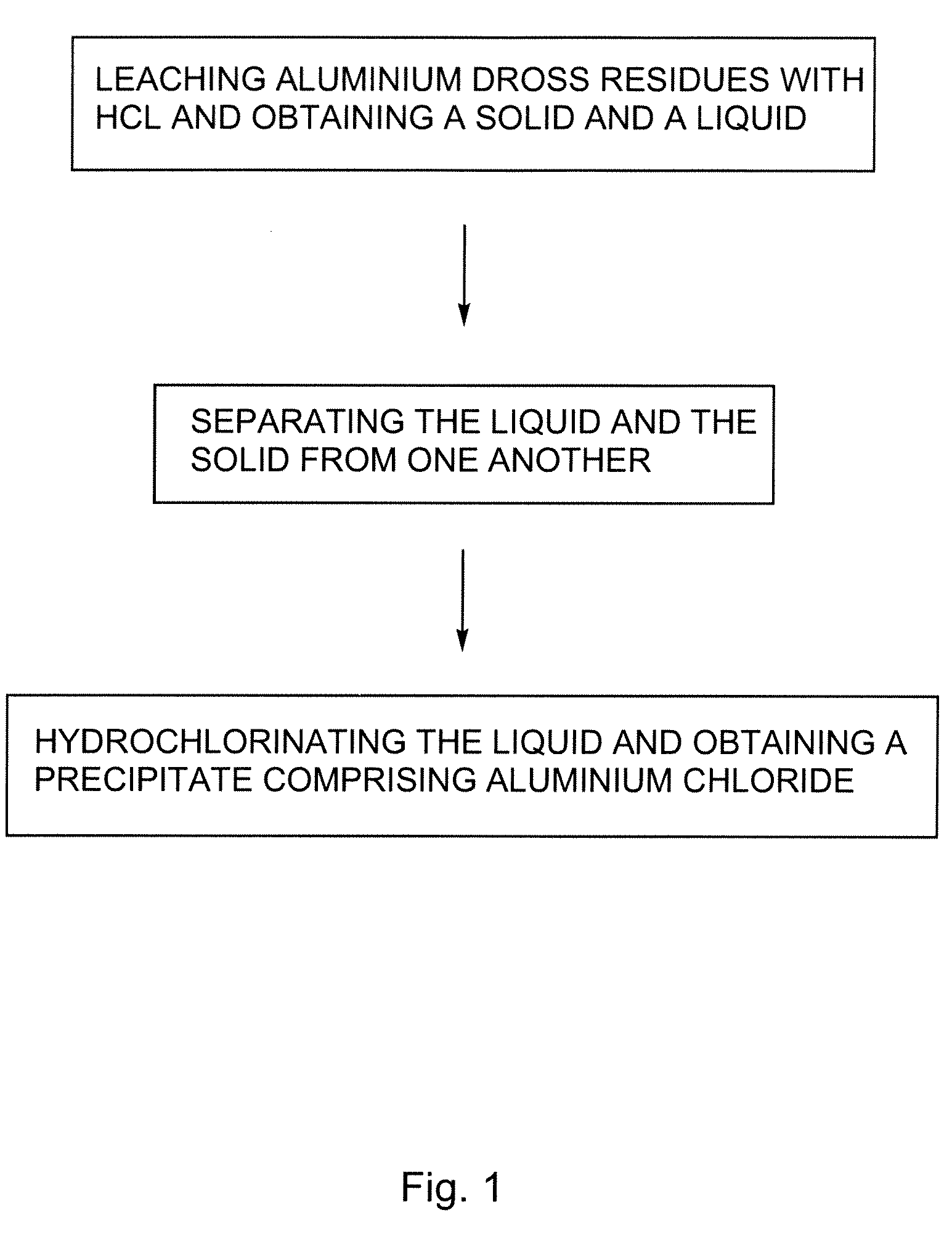Processes for treating aluminium dross residues
a technology of aluminium dross and processing technology, applied in the field of inorganic chemistry, can solve the problems of increasing environmental problems or even bans, and achieve the effect of higher conversion yields into alumina and higher yields of al atoms
- Summary
- Abstract
- Description
- Claims
- Application Information
AI Technical Summary
Benefits of technology
Problems solved by technology
Method used
Image
Examples
example 1
Treatment of Aluminium Dross Residues
[0048]The following example was carried out on aluminium dross residues, and more particularly on SEROX™. The SEROX sample contained the following components: 32.4% of alumina, 1.0% of aluminium metal, 7.0% of gibbsite (Al(OH)3), 20.0% of diaoyudaoite (NaAl11O17), 0.5% of sylvite (KCl), 2.5% of halite (NaCl), 2.0% of cryolite (Na3AlF6), 3.1% of mica, 0.5% of sodalite (Na4Al3Si3O12Cl), 2.5% of Ca2SiO4, 1.8% of albite (NaAlSi3O8), 1.0% of fluorite CaF2 and humidity. It was calculated that the theoretical yield of 100% conversion of all the Al atoms contained in the dross residues into alumina would provide an amount of 24.9 g of alumina.
[0049]The process can comprise from 2 to 4 steps (Steps A, B, C and D) and, in accordance with the steps carried out, different final products (aluminium chloride or alumina) will be obtained and the percentage of Al atoms recovered from the aluminium dross residues will also vary. As previously indicated, each proc...
PUM
| Property | Measurement | Unit |
|---|---|---|
| temperature | aaaaa | aaaaa |
| temperature | aaaaa | aaaaa |
| temperature | aaaaa | aaaaa |
Abstract
Description
Claims
Application Information
 Login to View More
Login to View More - R&D
- Intellectual Property
- Life Sciences
- Materials
- Tech Scout
- Unparalleled Data Quality
- Higher Quality Content
- 60% Fewer Hallucinations
Browse by: Latest US Patents, China's latest patents, Technical Efficacy Thesaurus, Application Domain, Technology Topic, Popular Technical Reports.
© 2025 PatSnap. All rights reserved.Legal|Privacy policy|Modern Slavery Act Transparency Statement|Sitemap|About US| Contact US: help@patsnap.com



